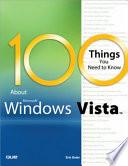The Definitive Guide
Of all the Ajax-specific frameworks that have popped up in recent years, one clearly stands out as the industrial strength solution. Dojo is not just another JavaScript toolkit—it's the JavaScript toolkit—and Dojo: The Definitive Guide demonstrates how to tame Dojo's extensive library of utilities so that you can build rich and responsive web applications like never before. Dojo founder Alex Russell gives a foreword that explains the "why" of Dojo and of this book. Dojo provides an end-to-end solution for development in the browser, including everything from the core JavaScript library and turnkey widgets to build tools and a testing framework. Its vibrant open source community keeps adding to Dojo's arsenal, and this book provides an ideal companion to Dojo's official documentation. Dojo: the Definitive Guide gives you the most thorough overview of this toolkit available, showing you everything from how to create complex layouts and form controls closely resembling those found in the most advanced desktop applications with stock widgets, to advanced JavaScript idioms to AJAX and advanced communication transports. With this definitive reference you get: Get a concise introduction to Dojo that's good for all 1.x versions Well-explained examples, with scores of tested code samples, that let you see Dojo in action A comprehensive reference to Dojo's standard JavaScript library (including fundamental utilities in Base, Dojo's tiny but powerful kernel) that you'll wonder how you ever lived without An extensive look at additional Core features, such as animations, drag-and-drop, back-button handling, animations like wipe and slide, and more Exhaustive coverage of out-of-the-box Dijits (Dojo widgets) as well as definitive coverage on how to create your own, either from scratch or building on existing ones An itemized inventory of DojoX subprojects, the build tools, and the DOH, Dojo's unit-testing framework that you can use with Dojo—or anywhere else If you're a DHTML-toting web developer, you need to read this book—whether you're a one-person operation or part of an organization employing scores of developers. Dojo packs the standard JavaScript library you've always wanted, and Dojo: The Definitive Guide helps you transform your ideas into working applications quickly by leveraging design concepts you already know.
Dojo founder Alex Russell gives a foreword that explains the "why" of Dojo and of this book.










